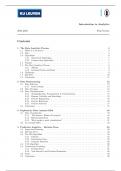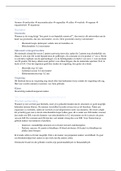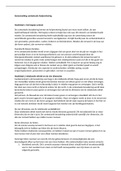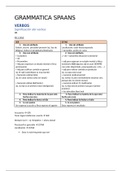Samenvatting
Summary Introduction to Analytics D0H61a
Very comprehensive summary comprising all of the theory required to make the exam. If something is not included in the document (which will be rare), I always refer to the slides. Many subjects that may be confusing at first when going through the slides are described intuitively in this summary. ...
[Meer zien]







